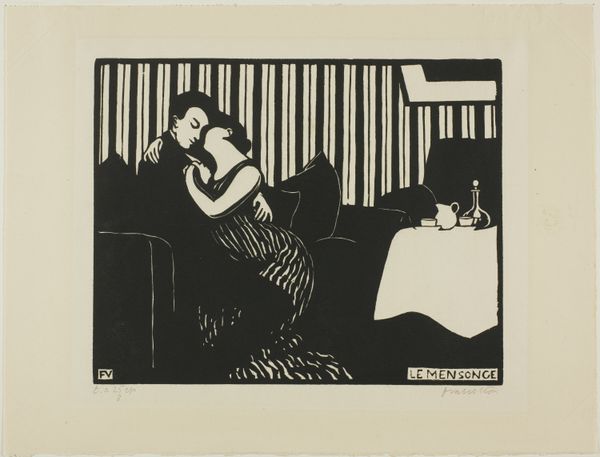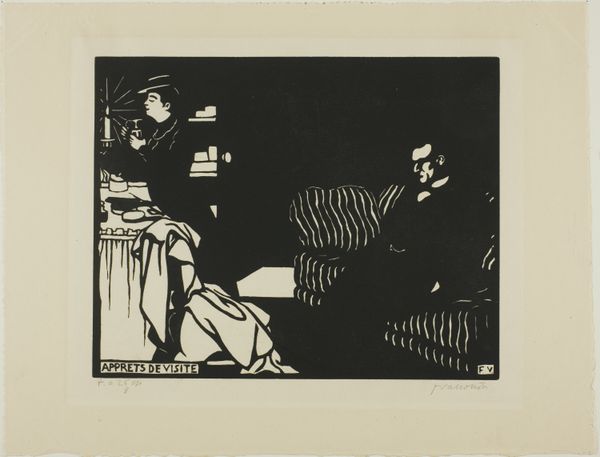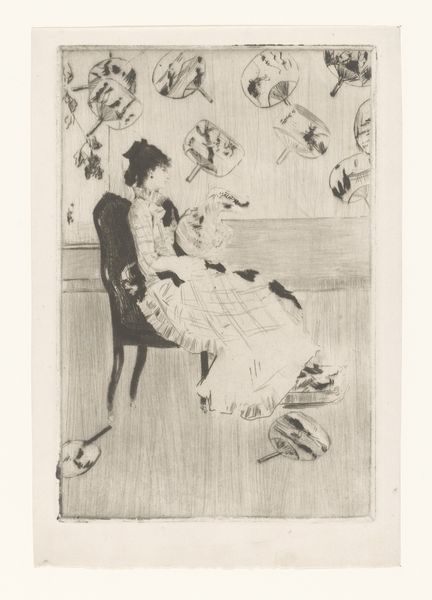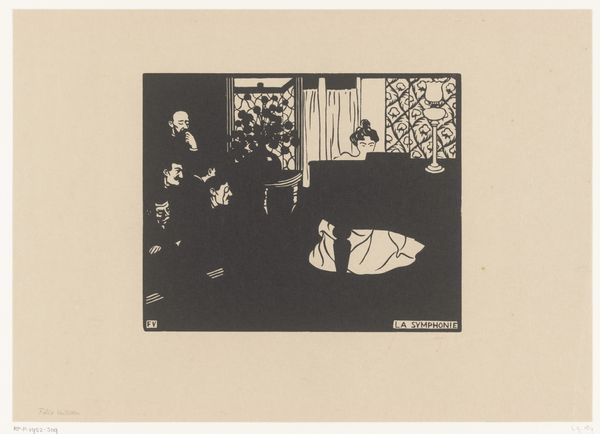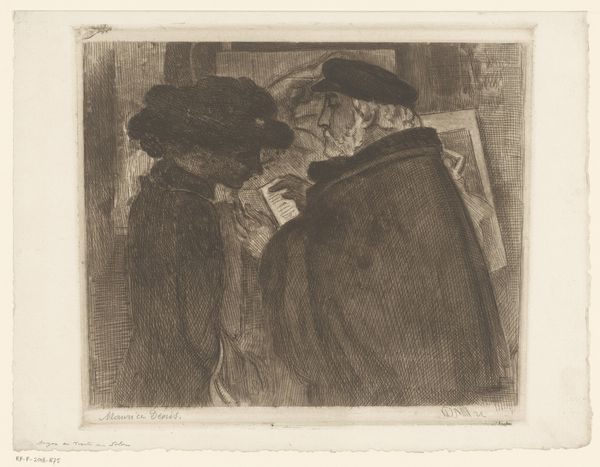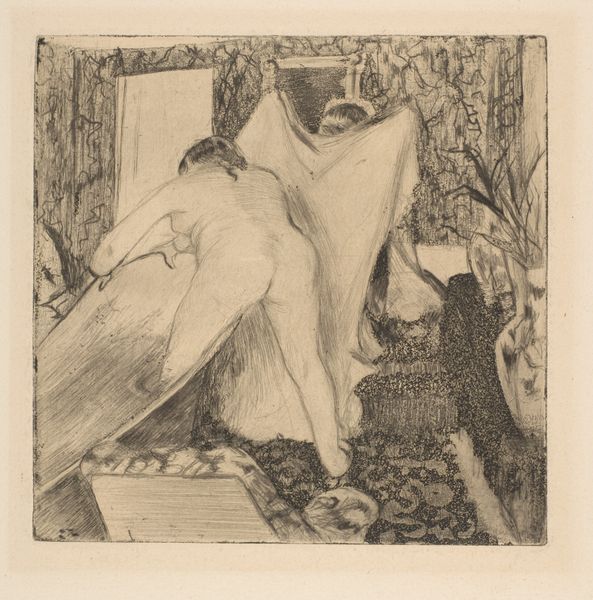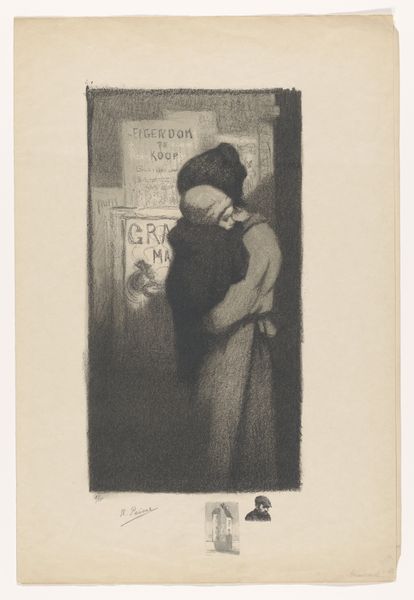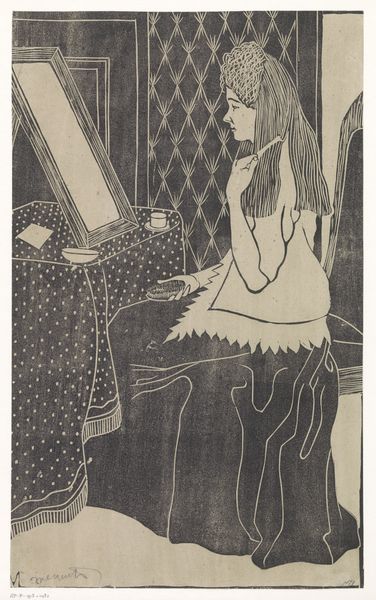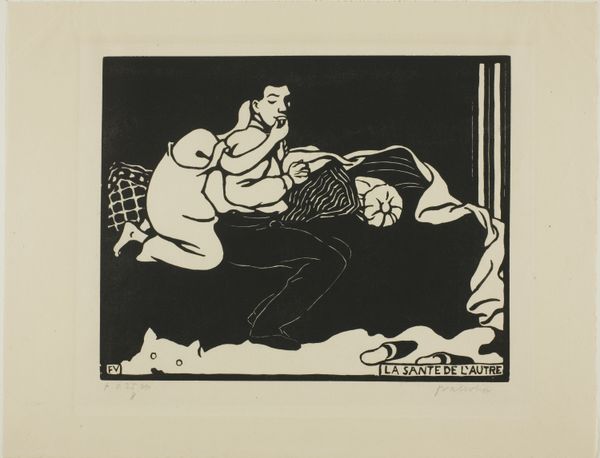
drawing, print, linocut, paper
#
drawing
#
art-nouveau
#
decorative element
#
narrative-art
# print
#
linocut
#
figuration
#
paper
#
linocut print
#
intimism
#
monochrome
Dimensions: 204 × 250 mm (image); 250 × 324 mm (sheet)
Copyright: Public Domain
Editor: Vallotton’s 1898 linocut, "The Fine Pin, plate three from Intimacies", currently at the Art Institute of Chicago, presents a scene of intimate embrace, but there's something unsettling in the stark contrast of black and white. What narratives or power dynamics do you see at play in this work? Curator: It's crucial to view this through the lens of its socio-political moment. The Intimists, like Vallotton, were pushing against the academic traditions, exploring modern life, and particularly, complex interpersonal relationships. The strong contrasts you noted were, in part, a product of printmaking and its capacity for distribution to a wide audience and speak to this. Where does this intimacy take place, and what’s interesting about this locale? Editor: The bedroom setting definitely domesticates the scene, perhaps suggesting a private world being put on display. The patterned carpet seems to create a sort of barrier. Curator: Precisely. Think about the social norms of the late 19th century and the evolving roles of women. The composition, almost theatrical with the drapery in the background, frames this intimate moment, turning it into a spectacle. Notice how the artist used graphic clarity in the background objects - the curtain, the bed. It contrasts with the couple at the center of the scene. Is the embrace a tender moment or is it a gesture, a pose of sorts? Is that relationship safe or dangerous? Editor: The tension between the intimacy and the starkness definitely complicates any simple interpretation. Curator: It speaks to the growing awareness of the nuances of modern relationships and of modern art in the lives of everyday people. It challenges viewers to question the societal structures influencing these interactions. Editor: Seeing it as a reflection of social tensions definitely sheds new light on what I initially saw as just a simple scene of affection. Curator: Indeed. Vallotton masterfully used printmaking to engage in broader social commentary. Hopefully you now understand what could once only be read by only privileged wealthy classes now is in the public eye.
Comments
No comments
Be the first to comment and join the conversation on the ultimate creative platform.
